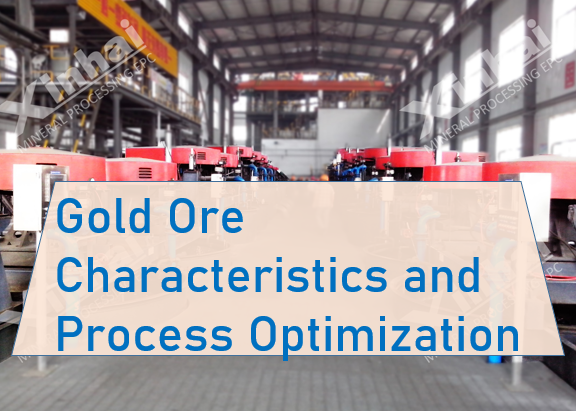Gold Ore Beneficiation: Ore Characteristics and Process Optimization
2024-09-24 Xinhai (1578)
2024-09-24 Xinhai (1578)
If you have any questions, please contact us through the following ways, we will give you more and better assistance!

Gold ores are of various types, and their beneficiation methods vary due to their different mineral compositions and properties. This article will explore the characteristics of different types of gold ores and their corresponding beneficiation technologies.
Poor sulfide gold ore: This type of ore has a relatively simple composition, usually dominated by quartz vein type or hydrothermal alteration type, with less pyrite content, and gold minerals are mainly natural gold. For this type of ore, coarse gold can be recovered by gravity separation, fine gold is often recovered by flotation, and very fine gold ore is suitable for full mud cyanidation.
High sulfide gold ore: This type of ore contains more pyrite or arsenopyrite, the gold grade is low, and the natural gold particles are small and often wrapped by pyrite. Flotation can be used to separate gold from sulfides, but in order to improve the recovery rate of gold, it is usually necessary to combine it with a combined beneficiation process.

Polymetallic sulfide gold ore: This type of ore has a high sulfide content and contains a variety of metal minerals, such as copper, lead, zinc, silver, etc. These metal minerals are usually valuable for separate mining and recovery. The gold particle size varies greatly, is unevenly distributed, and coexists with a variety of minerals. The beneficiation method needs to be determined according to the ore type and mineral characteristics. For example, gold-containing copper-iron ore may use a combined flotation-magnetic separation process.
Gold-containing copper ore: Unlike polymetallic sulfide gold-containing ore, this type of ore has a lower gold grade, but gold is the main comprehensive recovery element. The gold mineral has a medium particle size and a complex coexistence relationship with copper minerals. Flotation is often used, and then the flotation concentrate is treated by pyrometallurgy to recover gold.
Telluride gold ore: Natural gold and telluride gold are the main gold-containing minerals. This type of ore is mostly low-temperature hydrothermal deposits. Since telluride gold minerals are brittle and easy to muddy during grinding, which affects flotation, stage grinding and stage flotation processes are often used.
Gold-bearing oxidized ore: This type of ore has limonite as the main metal mineral, contains little or no sulfide, and gold is mainly found in the cracks of gangue minerals and weathered metal oxides. The main beneficiation methods include gravity separation and cyanidation. Gravity separation + cyanidation can be used for partially oxidized ores, while gravity separation, stirring cyanidation and percolation cyanidation are used for all oxidized ores.
The rational selection of gold resources is crucial to improve the recovery rate of gold and reduce environmental impact. In order to achieve economical and environmentally friendly gold ore beneficiation, a comprehensive beneficiation test should be carried out first to determine the beneficiation method that best suits the specific ore properties. With the advancement of technology, new beneficiation processes and equipment are constantly being developed to improve the processing efficiency of gold ore and the recovery rate of gold.